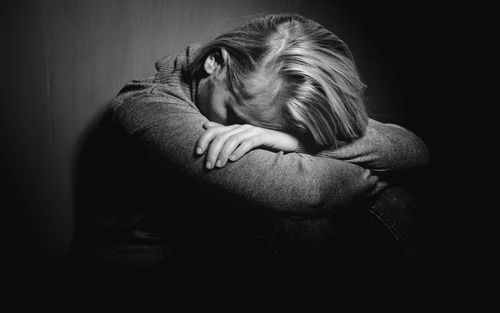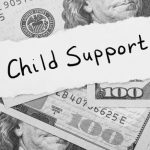The National Coalition Against Domestic Violence estimates that one in three women and one in four men are victims of domestic violence in their lifetimes. It’s an unsettling statistic. Victims can receive protection through law enforcement, criminal prosecution, no-contact orders, and other governmental safeguards. But what if those aren’t available in your situation, or you’re interested in additional means of security? An order for protection or “OFP” might be a helpful option.
Before you read this article: if you are facing an imminent threat of domestic violence, or have been a victim of domestic violence, you need to alert law enforcement. They are the first line of defense to actual or threatened abuse. An OFP can be helpful if police involvement isn’t possible in your situation, or in addition to help from officers, but it’s not a substitution. Law enforcement should be your first lifeline.
There are occasions in which an OFP can assist you. This article will provide an overview of what an OFP is, how it can be used, the protection it offers, and the consequences it imposes on abusers.
What Is An OFP?
An order for protection is a civil remedy for victims of domestic violence. That means, an individual can obtain relief from another individual directly, without the involvement of a police officer, county attorney, or other government entity (although it’s still a legal process, and therefore will involve the Court). A person can petition the Court for an OFP by filing a request, and typically, appear at a hearing on a later date to provide evidence in support of his or her allegations.
The Minnesota legislature has enacted the “Domestic Abuse Act,” which established the OFP, and provides the rules for seeking, obtaining, and utilizing these protection orders. The Act reveals law-makers’ concerns that this is both a common and serious issue, by attempting to make the OFP process as user-friendly as possible (which is not common for legal processes generally). Some examples of this include:
- There is no filing fee.
- Courts are required to provide simplified forms and clerical assistance to aid in drafting and filing a petition.
- An OFP petition can be filed in a number of different counties (where either party resides, where the domestic violence occurred, or in any county in which a family court matter involving both parties is proceeding – divorce, custody, etc.).
- Courts must order a sheriff to assist victims with things like retrieving belongings from a home, removing the abusive party from a residence, etc.
There are also condensed timelines involved, to speed up the process of obtaining protection. After a petition is filed, the Court can issue a temporary OFP, and a hearing must be held within fourteen days to determine if the OFP should continue. However, if the victim only requests certain kinds of relief (more on this below), no hearing is required at all – but one will be scheduled if requested by the abusing party.
Who Can Request An OFP, And On Whose Behalf?
An OFP is available to all victims of domestic abuse, which is defined as:
- Physical harm, bodily injury, or assault.
- The infliction of fear of physical harm, bodily injury, or assault.
- Terroristic threats.
- Criminal sexual conduct.
- Interference with an emergency call.
A person can file on his/her own behalf, on behalf of the family or household members, and on behalf of a minor by a guardian or adult. Family or household members is broadly defined as:
- Spouses and former spouses.
- Parents and children.
- Persons related by blood.
- Persons residing together, or who have resided together in the past.
- Persons who have a child together.
- Pregnant mothers and alleged fathers.
What Relief Is Available?
A wide variety; a much wider variety, for example, that can be obtained through the cousin of this protection order: the restraining order (see my article on restraining orders for more information). A petitioner for an OFP can seek:
- Restraint on abuser from committing acts of domestic abuse.
- Restraint on contact, even through electronic, social media, or third parties.
- The requirement of the abuser to continue insurance coverage for the victim.
- Exclusion of the abusing party from a shared residence, or the petitioner’s sole residence or place of employment, or a reasonable vicinity around these areas.
- Temporary custody and parenting time.
- Temporary child support and spousal support.
- Counseling.
- Temporary use and possession of the property.
Going back to when hearings are, or are not, required: if the only relief requested is 1 – 4 above, then no hearing is required unless requested by the abuser.
Consider the powerful implications of this. Not only can a person seek protection and restrictions on contact; but victims can immediately get custody, child support, and spousal support – which can take many months to obtain when sought through separate lawsuits.
An OFP cannot remain in place for longer than two years unless the court determines a longer period is appropriate. If an extension is sought, a hearing must be held (unless only seeking relief in 1 – 4 of the above list). The court will consider factors such as violations of the OFP or prior OFPs; ongoing fear of harm, stalking conduct, and the incarceration and release of the abuser.
What Are The Penalties For Violating An OFP?
Minnesota takes violations seriously. Compare, for instance, North Dakota’s protection order statute, in which, violations only result in misdemeanors, unless another violation has occurred previously (then a “Class C” felony), and no minimum sentences are imposed. In Minnesota, a violation can result in an enhanced sentence in a wider variety of situations, and minimum sentences are required:
- All violations result in at least a misdemeanor. The minimum sentence is three days imprisonment, and the abuser must participate in counseling and/or another programming.
- A violation becomes a gross misdemeanor when the abuser has a domestic offense (not just a violation of an OFP) within the preceding ten years. The minimum sentence is ten days, and counseling/programming is required.
- A violation is a felony when occurring within ten years of the first of two domestic offense convictions, or when the violation was perpetrated while possessing a dangerous weapon. The minimum sentence is thirty days, and counseling/programming is required.
Last, the Court can order the abuser to relinquish firearms to law enforcement (this can be a penalty for violation, but also can be required as a part of the original relief – even without a violation).
Get Help And Get An Attorney
Help is available to victims of domestic violence, whether through an OFP or other resources (be sure to search for crisis centers and shelters through a website like this one). Minnesota law provides protection to victims seeking refuge from abusers perpetrating or threatening a variety of abusive conduct, provides a number of kinds of relief, and imposes a series of penalties.
To help you navigate this sea of information, and to ensure the best chance of getting the protection you need, find an attorney to assist you. Not only will you have a compassionate advocate by your side through a difficult process, but you’ll have the comfort of knowing his/her experience will return the best result.
If you have questions regarding the topic of this article, or for assistance with an order for protection, or other family law issues, please call our Family Law Team at 701-297-2890 or email us via the contact form below.
The information contained in this article and on this website is for informational purposes only and not for the purpose of providing legal advice. You should contact an attorney to obtain advice with respect to your particular set of facts.










